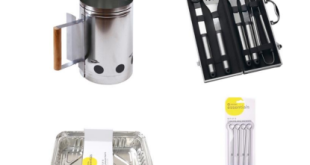Do you read the Shop feature page in the Telegraph Magazine? For the benefit of those who don’t, I will tell you that it is a regular feature written by Mary Portas. She visits a different shop every week and reports, very straightforwardly, on its various attributes – good and bad.

I find it fascinating to read. Mary chooses her subjects quite eclectically: some shops are a part of huge chains and some are much smaller businesses. But there is one element that features more regularly than anything else in these reports: poor customer service.
So, the figure of 88% stated in the title is, I believe, very accurate. We all have horror stories of poor service in shops, and we know that it’s often the outlets of very large retail businesses that perform the worst. Yes, this is often the case – but not always. I’ve experienced terrible service from some retailers – and from those operating in our product sector too!
Is poor service one of the factors driving customers from the high street and onto their computer screens? I believe it is. So, what’s to be done? I recommend carrying out an audit of your customer service levels. This is something that you can easily do yourself.
Make a list of all the areas of your business where a customer may come into contact with your business. This would include customers walking through the door, viewing your website, phoning you and, probably far less often, writing to you.
Are you sure that you’re offering the best possible service to customers through all these “touchpoints” – every time? We’ve all heard of mystery shoppers, but have we ever used them? Or do we consider that they’re a resource only very big businesses can afford to use?
Why not think laterally? You want a mystery shopper: then why not use a friend or family member who’s not known in your shop. Compile a report sheet, the simpler the better, and ask your mystery shopper” to perform some exploratory tasks.
These could centre around calling into the shop and asking advice on a product from your range – or it would probably be most beneficial if this covered a variety of products that included both simple and more complex items.
Also ask your shopper to phone the shop, and to ask similar product-related questions. And whilst asking about products they could ask much else besides, such as your location, opening hours and “can I buy it on your website, do you deliver and when?”.
It could prove to be a very interesting exercise. I called the customer service number of a very prominent retailer in our product sector on Saturday. The recorded message instructed me that “our hours of business are Monday to Friday…and please leave a message”. If I’d been a genuine customer would I have made a purchase? Would I have gone back on Monday? I don’t think so.
These customer encounters have been called “moments of truth”**, because this is what they are: they reveal the real truth about how your customer service is working – or not. Good luck with your research!
*Result from a poll of 5,000 UK shoppers by Market Force
** Jan Carlzon: Moments of Truth – This CEO’s story of how he turned around SAS airlines from a business losing $20m a year to one making profits of $50m
 Housewares Business-to-business magazine for housewares retailers and their suppliers
Housewares Business-to-business magazine for housewares retailers and their suppliers



